On View
Decades Before Judy Chicago’s ‘The Dinner Party,’ Virginia Woolf’s Sister Made a Set of Dinner Plates Celebrating 50 Historic Women
Vanessa Bell and Duncan Grant's proto-feminist masterpiece is on public view for the first time.
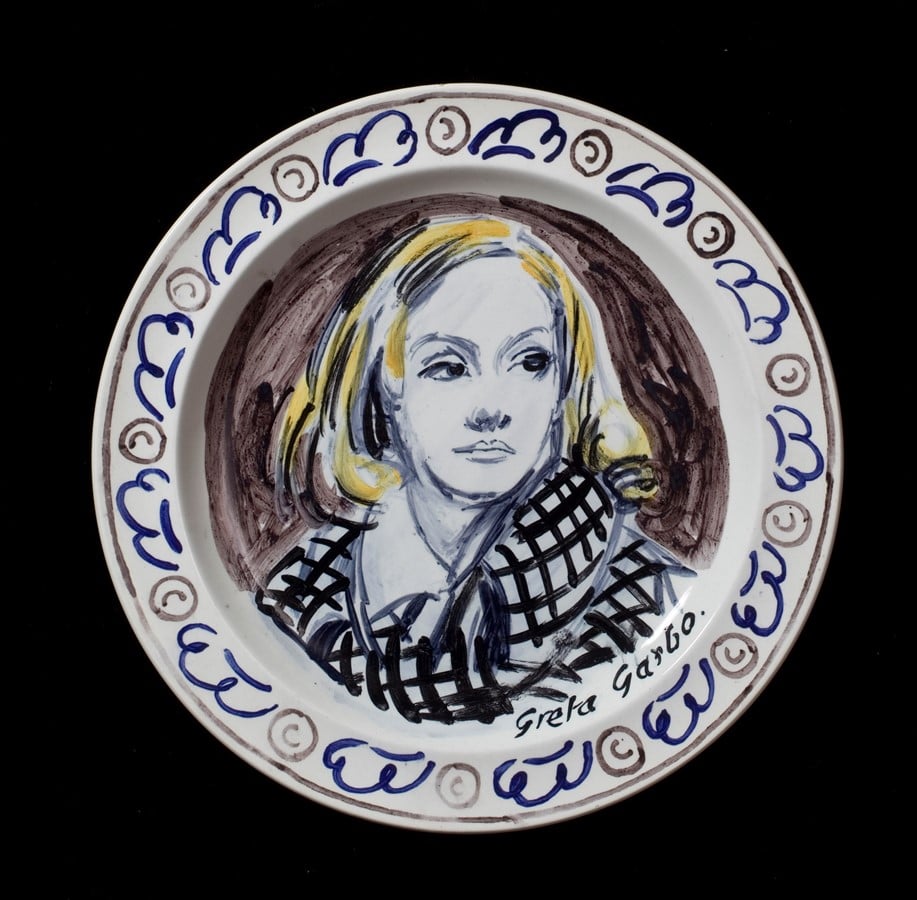
Vanessa Bell and Duncan Grant's proto-feminist masterpiece is on public view for the first time.

Sarah Cascone

A long-lost, groundbreaking work of feminist art by British artists Vanessa Bell and Duncan Grant, members of the famously bohemian Bloomsbury Group, is being shown publicly for the first time at Piano Nobile gallery in London.
The Famous Women Dinner Service is a 50-piece ceramic dish set featuring portraits of famous women from history, completed between 1932 and 1934. The subjects range from Hollywood star Greta Garbo to the Queen of Sheba to Marian Bergeron, who in 1933 became the youngest-ever Miss America at age 15.
“It’s a major proto-feminist work,” Matthew Travers, a director at London’s Piano Nobile gallery, told artnet News. “All of the women they depicted did something interesting and powerful, and often were quite scandalous—the Bloomsburys might have said ‘liberated’—in the way they lived their private lives, and often did not conform to the patriarchies they were living in.”
Even though it predates Judy Chicago’s iconic The Dinner Party—a triangular table with 39 place settings recognizing the achievements of women throughout history—by more than 40 years, there’s a reason you haven’t heard of The Famous Women Dinner Service. A private commission, it was never publicly displayed, and for decades, art historians believed it was lost. Indeed, Chicago conceived her magnum opus without knowledge of its British counterpart.
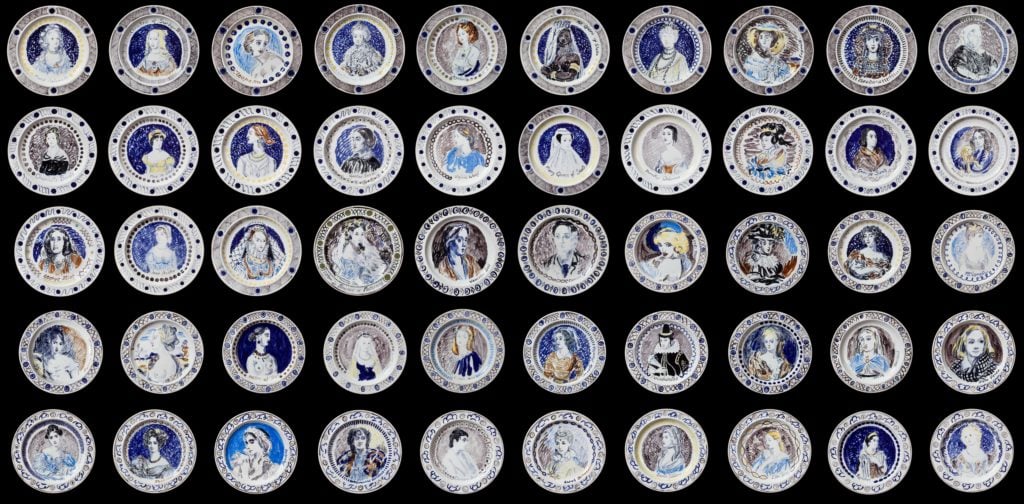
Vanessa Bell and Duncan Grant, The Famous Women Dinner Service (c. 1932–34). Photo courtesy Piano Nobile/Robert Travers Works of Art Limited.
The Famous Women Dinner Service was commissioned by British art historian Kenneth Clark and his first wife Jane, who were major patrons of British art. They invited Bell, Virginia Woolf’s older sister, and Grant, her collaborator and companion, to paint them a custom set of dishes.
The result was not at all what they anticipated. “The Clarks expected the dinner service would have the normal, more stylized Bloomsbury patterns on them, much like the borders around the portraits,” said Travers. But Grant and Bell had absolute freedom to decorate the plates however they chose: “The commission changed from a conventional ceramic service to a work that broke the barrier between the decorative and the fine arts.”
Grant and Bell created a bold feminist statement, featuring 12 dancers and actresses, 12 writers, 12 beauties, and 12 queens, each surrounded by bold patterned borders. (Kenneth may have been surprised, but Jane was quite involved in the creation, corresponding regularly with Bell about the work’s progress.) The artists, who were each responsible for creating half of the set, also painted a portrait of one another, putting the number at an even 50.
“Duncan is portrayed in the service in quite a feminine, sensitive way, making reference, perhaps, to his sexuality,” Travers said. “In ’30s Britain, this was a radical and brave way to depict one’s self.”
The portraits are painted on plain white Wedgwood plates, selected after a personal tour of the company factory with the owner, Josiah Wedgwood.
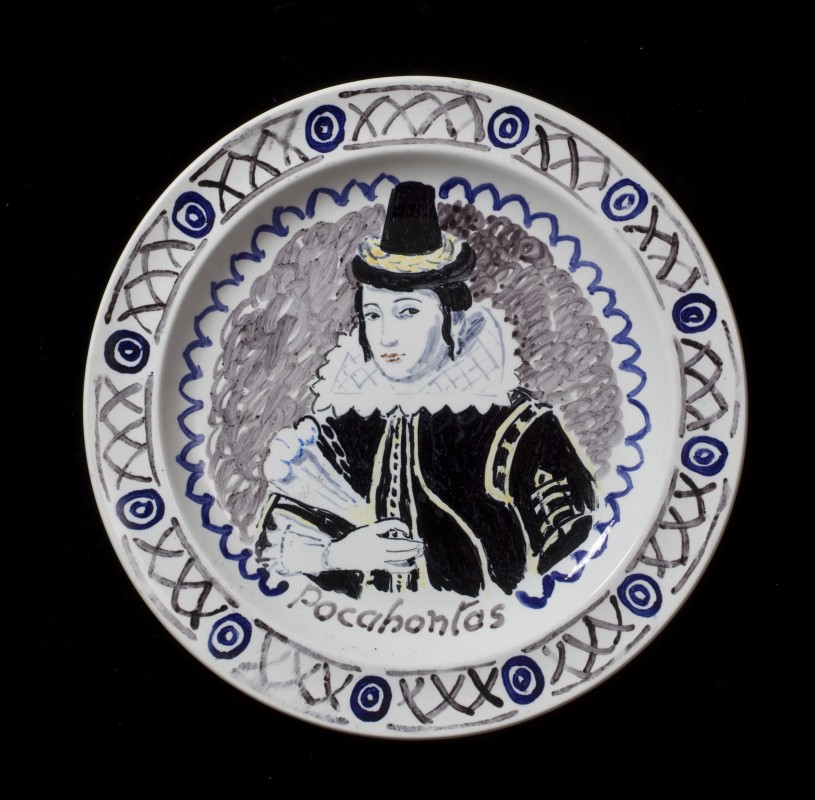
Vanessa Bell and Duncan Grant, The Famous Women Dinner Service, Pocahontas (c. 1932–34). Photo courtesy Piano Nobile/Robert Travers Works of Art Limited.
Honoring the likes of Russian ballerina Anna Pavlova, the ancient Greek poet Sappho, Egypt’s Cleopatra, English novelist Charlotte Brontë, and Bell’s sister Woolf, the plates are thought to have been used occasionally for dinner parties—with extreme care—at the Clark home. At the gallery, they are presented firmly as a work of feminist art.
“Very little is known about women,” wrote Woolf in 1929. “The history of England is the history of the male line, not the female. Of our fathers we know always some fact, some distinction. They were soldiers or they were sailors; they filled that office or they made that law. But of our mothers, our grandmothers, our great-grandmothers, what remains?”
Like The Dinner Party that would follow so many decades later, The Famous Women Dinner Service took a stab at rectifying that gap in the history books. Grant and Bell carefully researched each woman, basing most of their paintings on existing photographs and portraits. Inspired by the lively gatherings of the intellectuals of the Bloomsbury Group, the piece imagined a dinner party bringing together iconic women across history.
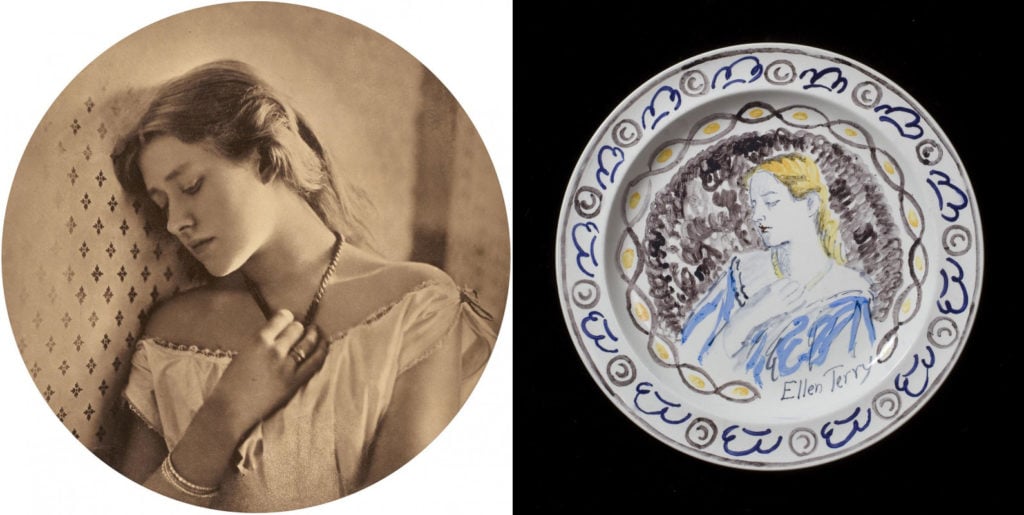
Julia Margaret Cameron’s photograph of Ellen Terry, (negative 1864; print about 1875), and the plate based on the photograph in The Famous Women Dinner Service (c. 1932–34), created by Duncan Grant and Cameron’s great-niece, Vanessa Bell. Photo courtesy of the J. Paul Getty Museum.
“There’s an African, there’s a Native American, there’s a Japanese poet; it was a diverse group of remarkable women,” Travers said. “They were obviously thinking outside of the Western box, and were very forward-thinking for that period.”
It’s also worth noting that the artists’ personal lives, with their complex romantic and creative entanglements, are just as fascinating as their newly rediscovered work. Bell, the great-niece of photographer Julia Margaret Cameron, and Grant had a long, fruitful personal and artistic partnership.
Although Bell was married to an art critic, she moved with Grant and his lover, writer David Garnett, to Sussex in 1914. Their home became a hub for the avant-garde writers, artists, and intellectuals of the Bloomsbury Group.
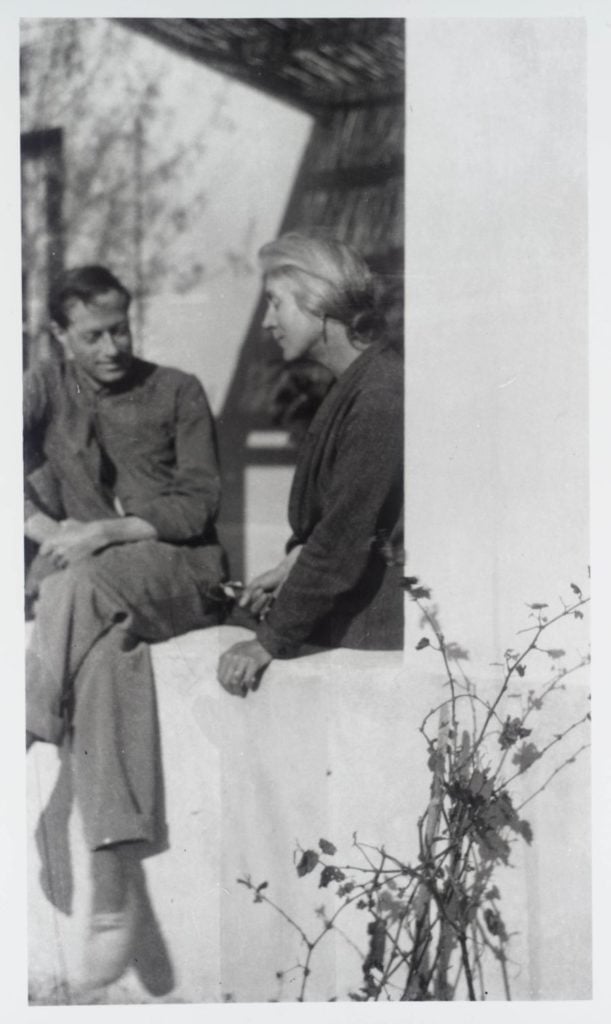
Duncan Grant and Vanessa Bell at La Bégère, their house at Cassis in the South of France. Photo courtesy of Piano Nobile, ©Tate.
Despite Grant’s sexuality, and with Clive Bell’s blessing, Bell and Grant had a daughter, artist and writer Angelica Garnett. She grew up believing Clive Bell was her father, and eventually married Garnett, the former lover of her real father, Grant. (And you thought your life was complicated.)
“Vanessa Bell and Duncan Grant were an artistic duo. They lived together and worked together, continually collaborating,” Travers said. He noted that there are very few such partnerships in the early 20th century, particularly in the UK.
The gallery’s current exhibition is dedicated to their joint careers, starting from their early output in the 1910s, which was largely inspired by the Paris school and the Modernist avant-garde movement.
“It’s easy for us to forget that these were really extraordinary and fairly mind-blowing works to produce at the time,” Travers noted. In later years, the duo returned to a more traditionally figurative style, “but that avant-garde nature, that pioneering sense, is still there.”
After Bell died in 1961, and Grant in 1978, a trust was formed to restore and preserve their historic property. It has been open to the public since 1986, and recognized as an accredited museum—Charleston, the Bloombury Home of Arts and Ideas—since 2013.
The museum dearly hopes to add The Famous Women Dinner Service to its collection. Should the Charleston raise the necessary funds, the purchase would reunite the plates with Bell and Grant’s preparatory drawings as well as four test plates for the project, which were found and identified in the property’s attic studio in 2015.
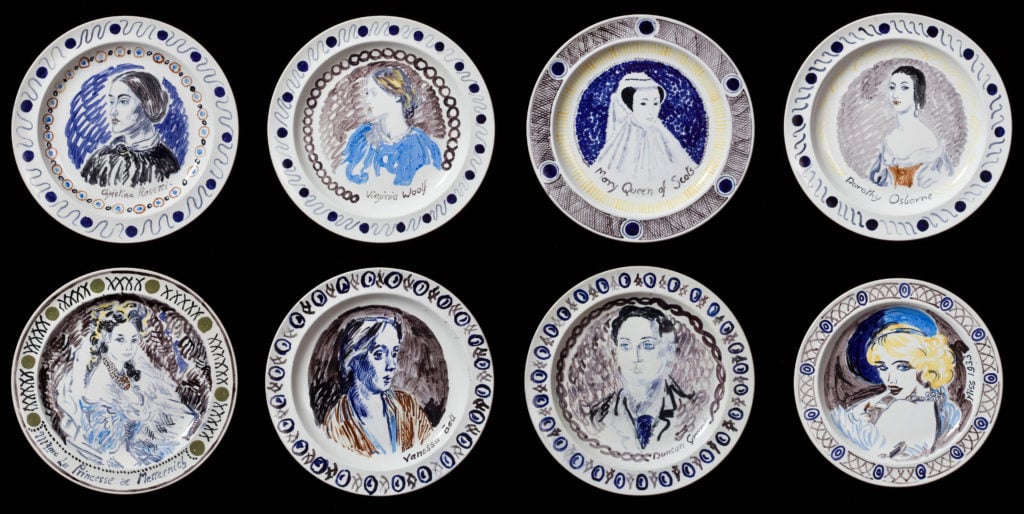
Vanessa Bell and Duncan Grant, The Famous Women Dinner Service (c. 1932–34), detail. Photo courtesy Piano Nobile/Robert Travers Works of Art Limited.
Despite the work’s illustrious history, it fell from the public’s mind. After the death of its original owners in 1976 and 1983, it was eventually sold to a private collector at auction in Germany. But its whereabouts were unknown until recently.
“The Famous Women Dinner Service was for all intents and purposes lost,” said Travers. But last year, Piano Nobile was shocked when one of the gallery’s clients admitted, amazingly, to having the entire set, which has quietly returned to the UK.
“What was so exciting is that they were all there and in perfect condition,” Travers added. “It’s so easy with ceramics that one or two could have got broken or lost. And no one knew if they had been sold in Germany as a group or individually—they could have been totally scattered.”
The gallery offered the work last summer at Masterpiece London, priced at £1 million ($1.3 million). Now, however, the gallery is doing its best to make the Charleston’s dream a reality, offering a discount that is substantially more that the 20 percent typically offered to museums.
“They are working hard to raise funds and we are confident it is going to happen,” said Travers. “From the moment we knew the Charleston wanted them, we put them aside for them. It would be a great home for this amazing work.”
See more of the plates from The Famous Women Dinner Service below.
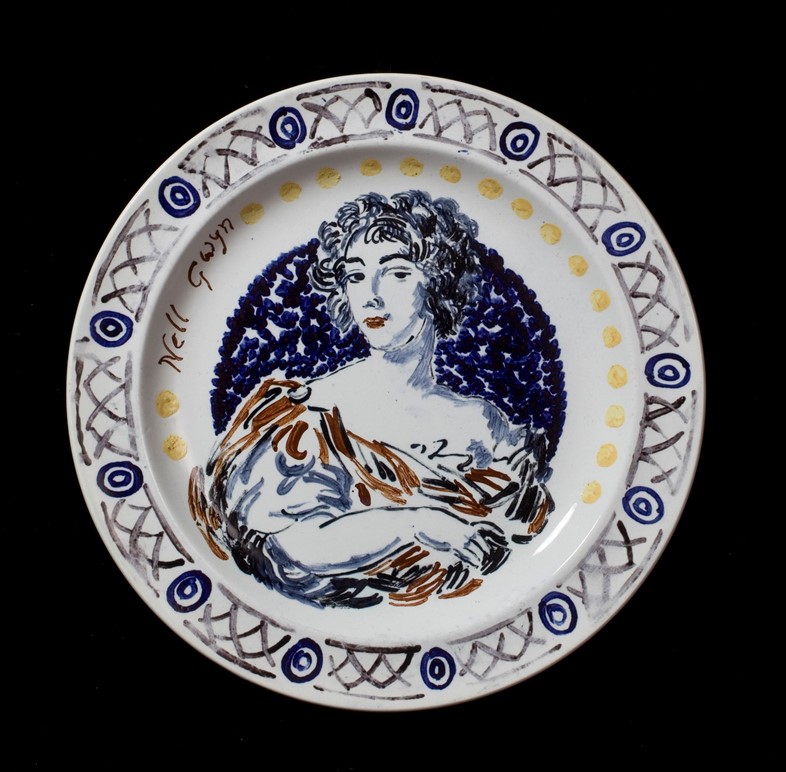
Vanessa Bell and Duncan Grant, The Famous Women Dinner Service, Nell Gwyn (c. 1932–34). Photo courtesy Piano Nobile/Robert Travers Works of Art Limited.
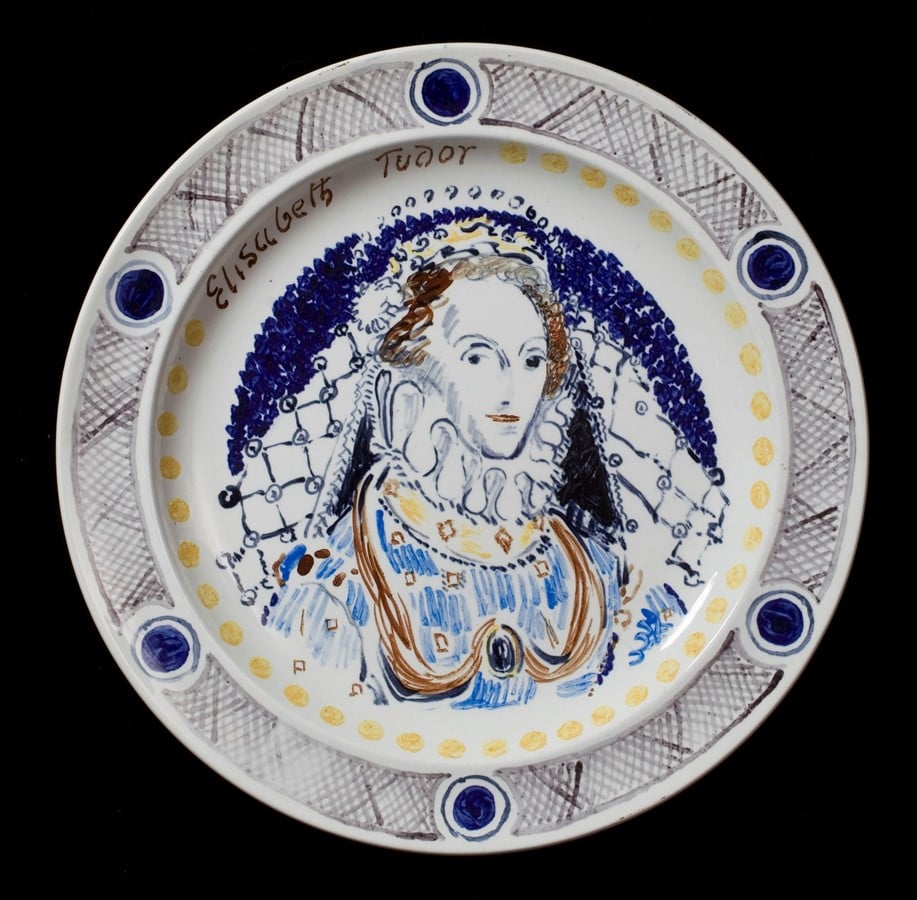
Vanessa Bell and Duncan Grant, The Famous Women Dinner Service, Elizabeth Tudor (c. 1932–34). Photo courtesy Piano Nobile/Robert Travers Works of Art Limited.
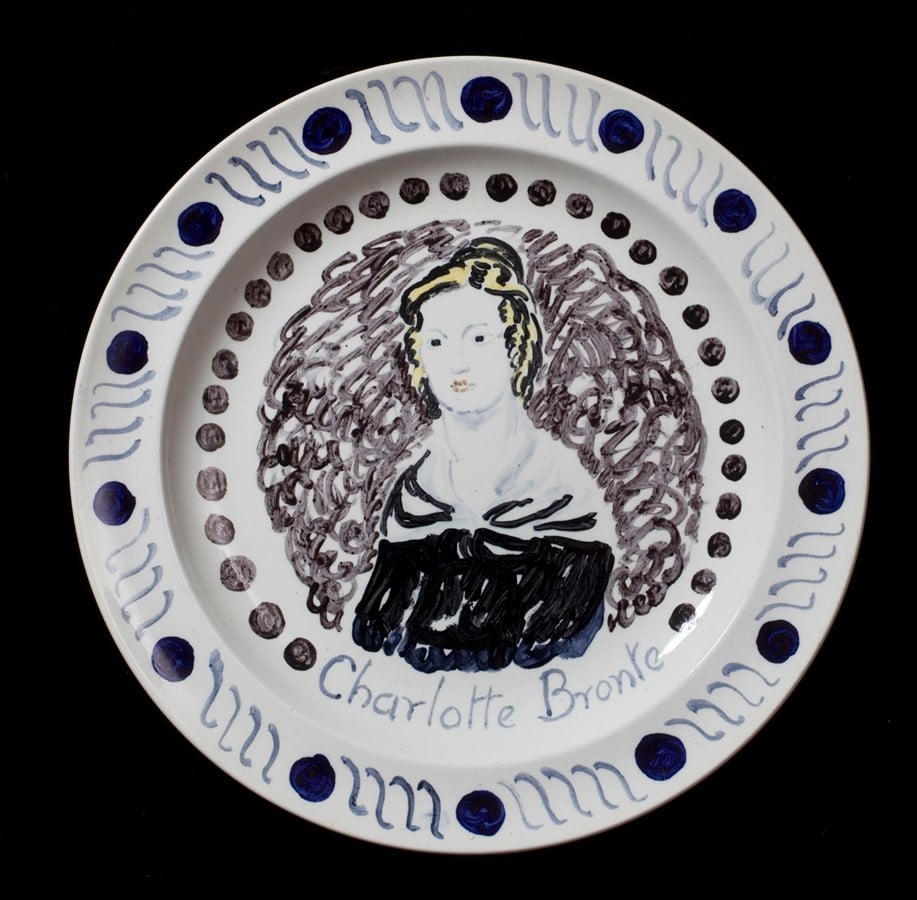
Vanessa Bell and Duncan Grant, The Famous Women Dinner Service, Charlotte Brontë (c. 1932–34). Photo courtesy Piano Nobile/Robert Travers Works of Art Limited.
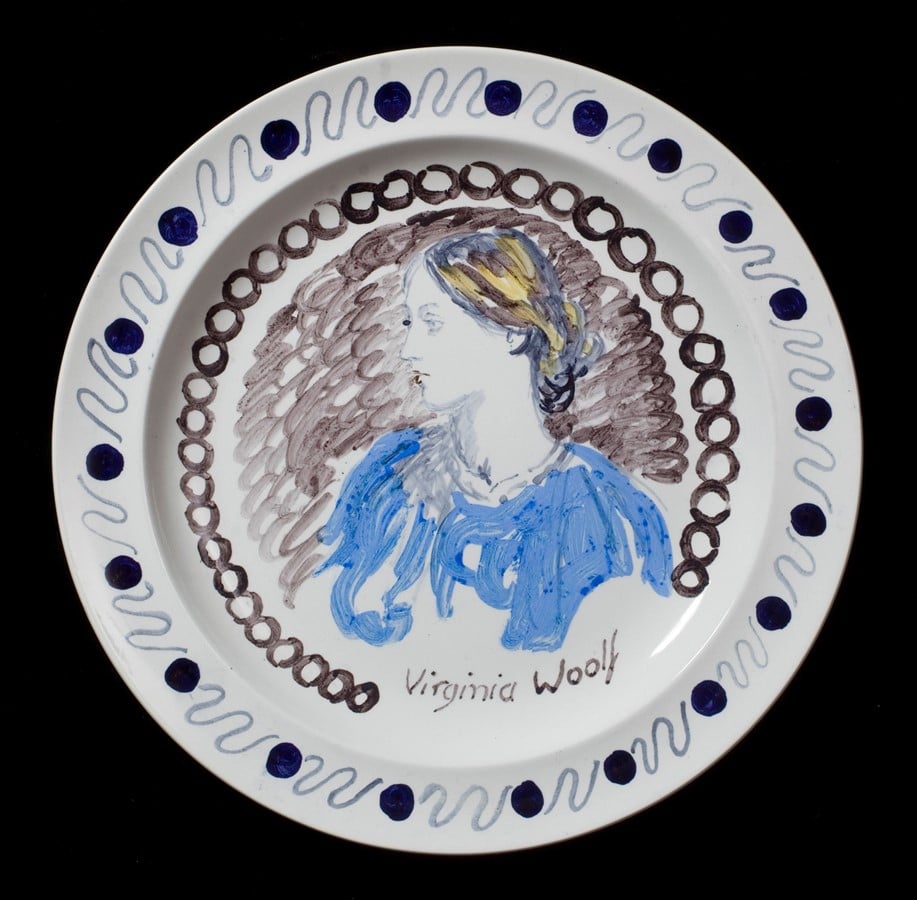
Vanessa Bell and Duncan Grant, The Famous Women Dinner Service, Virginia Woolf (c. 1932–34). Photo courtesy Piano Nobile/Robert Travers Works of Art Limited.
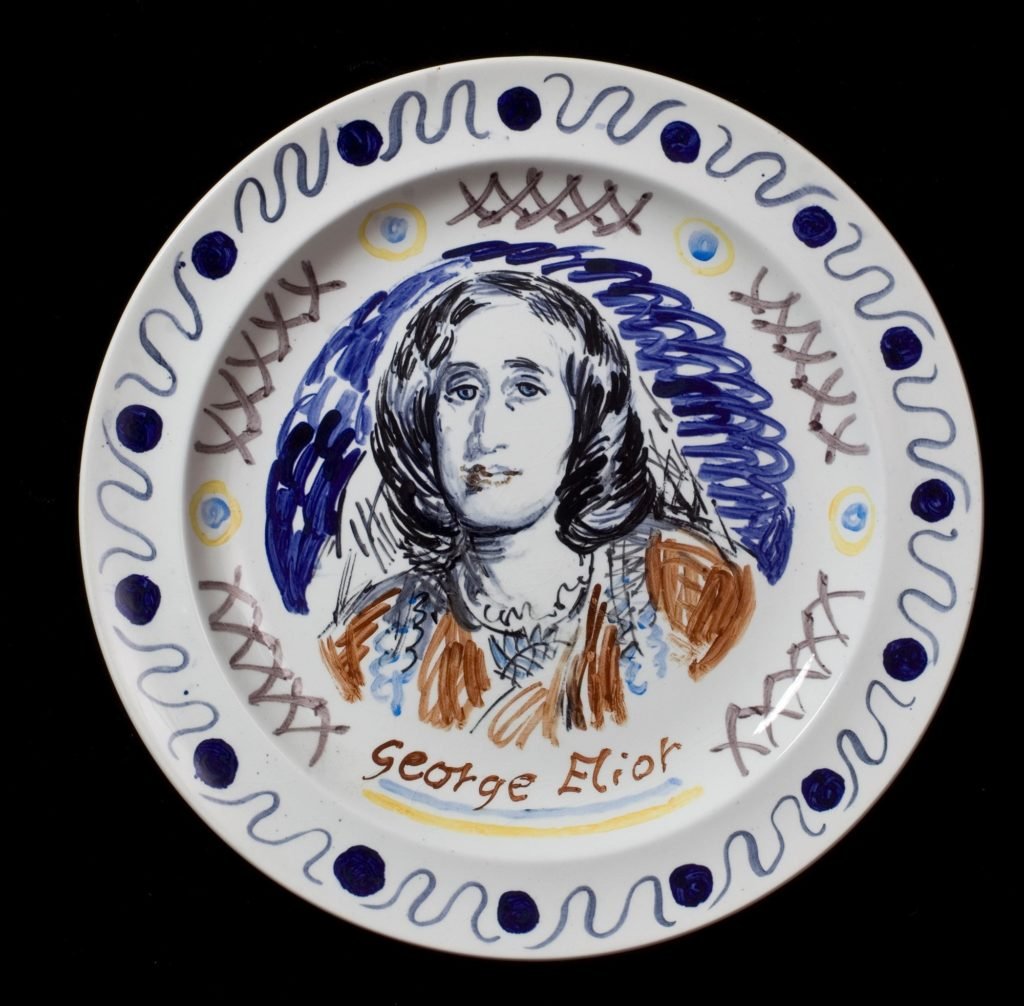
Vanessa Bell and Duncan Grant, The Famous Women Dinner Service, George Eliot (c. 1932–34). Photo courtesy Piano Nobile/Robert Travers Works of Art Limited.
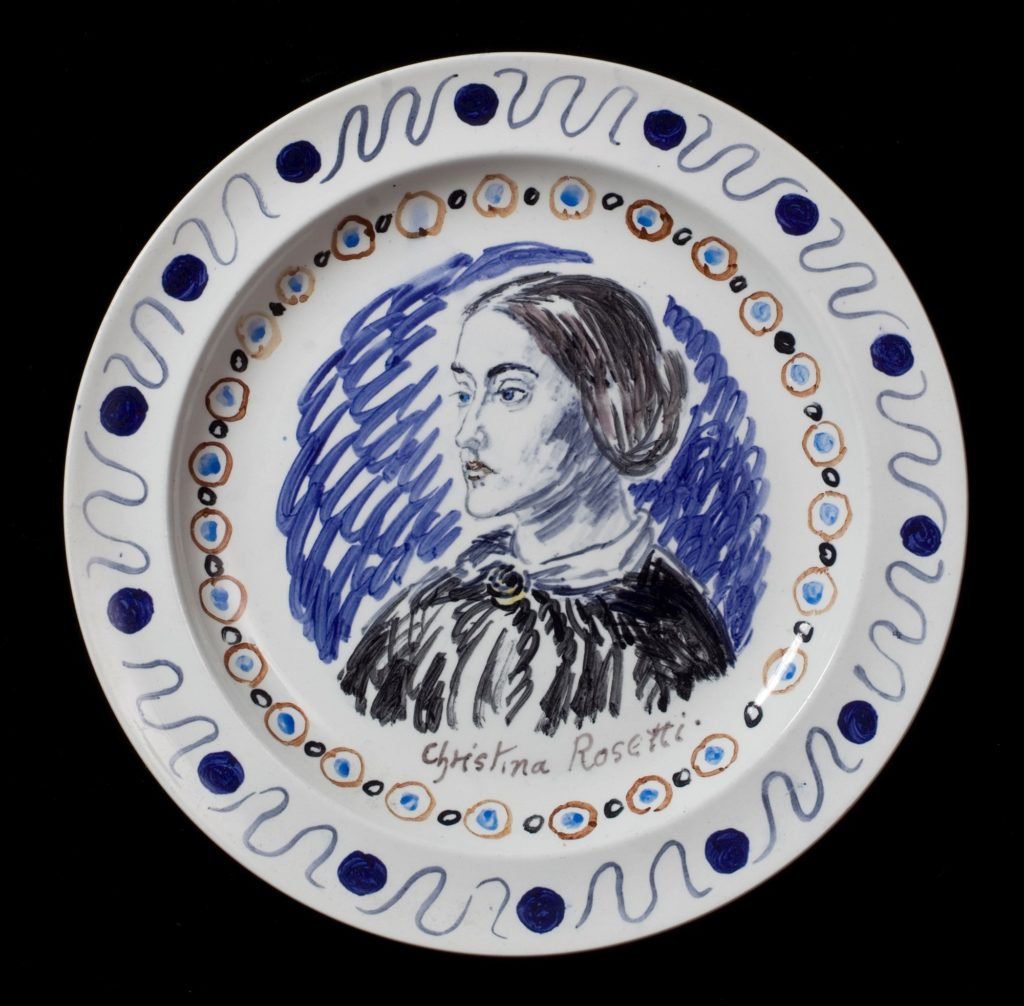
Vanessa Bell and Duncan Grant, The Famous Women Dinner Service, Christina Rossetti (c. 1932–34). Photo courtesy Piano Nobile/Robert Travers Works of Art Limited.

Vanessa Bell and Duncan Grant, The Famous Women Dinner Service, Christina of Sweden (c. 1932–34). Photo courtesy Piano Nobile/Robert Travers Works of Art Limited.
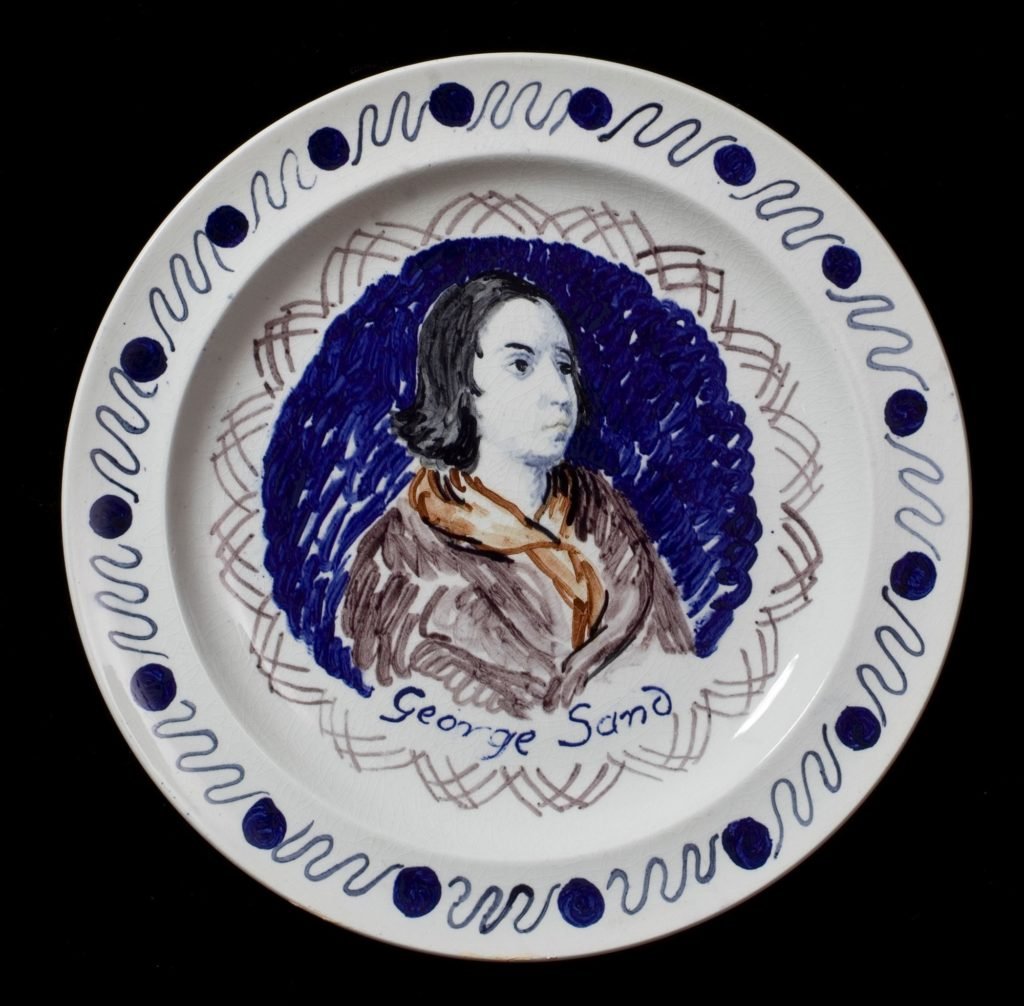
Vanessa Bell and Duncan Grant, The Famous Women Dinner Service, George Sand (c. 1932–34). Photo courtesy Piano Nobile/Robert Travers Works of Art Limited.
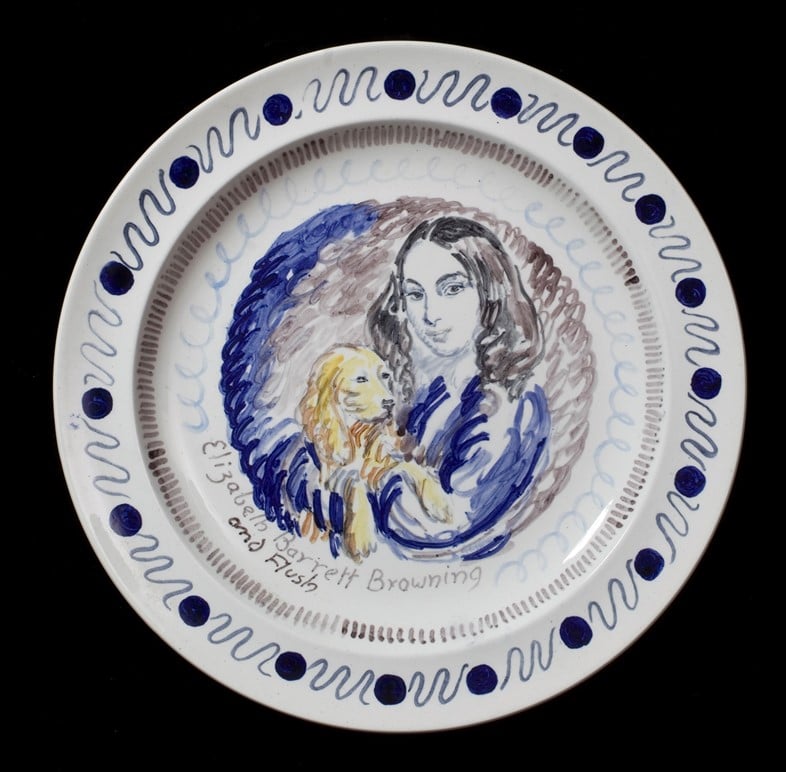
Vanessa Bell and Duncan Grant, The Famous Women Dinner Service, Elizabeth Barrett Browning (c. 1932–34). Photo courtesy Piano Nobile/Robert Travers Works of Art Limited.
“From Omega to Charleston: The Art of Vanessa Bell and Duncan Grant 1910–1934” is on show at Piano Nobile Gallery, 129 Portland Road, London, February 16–April 28, 2018.